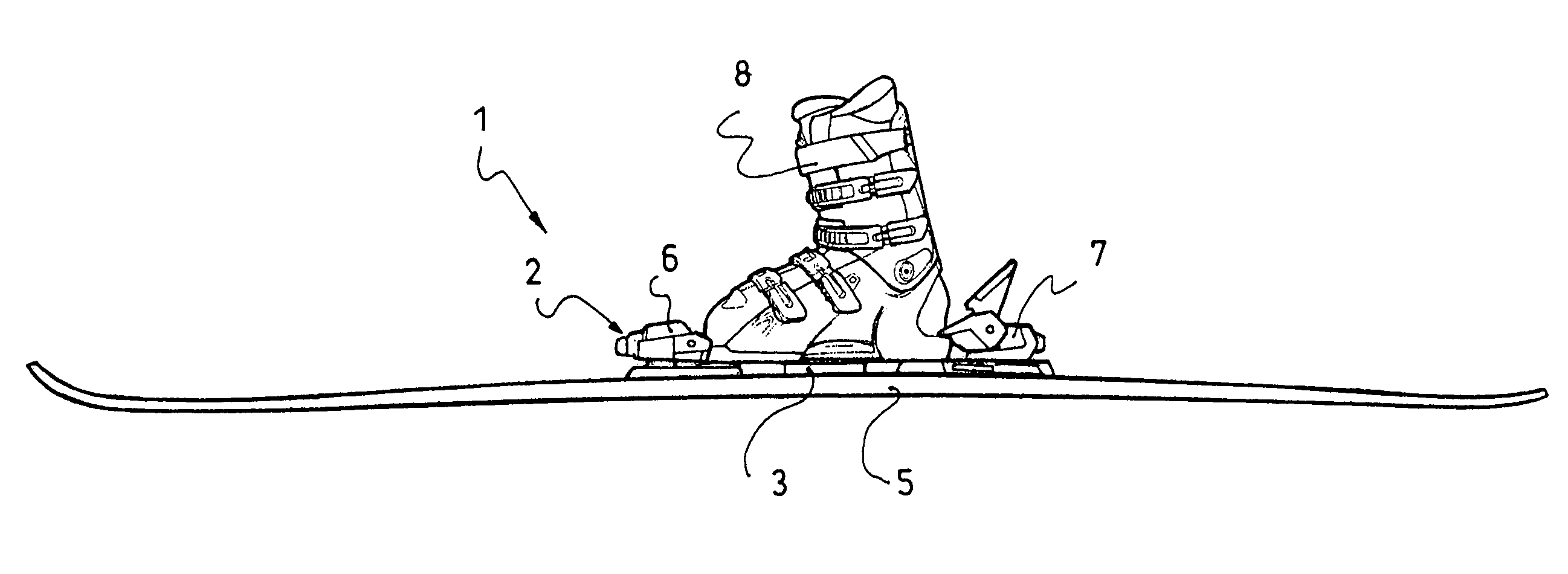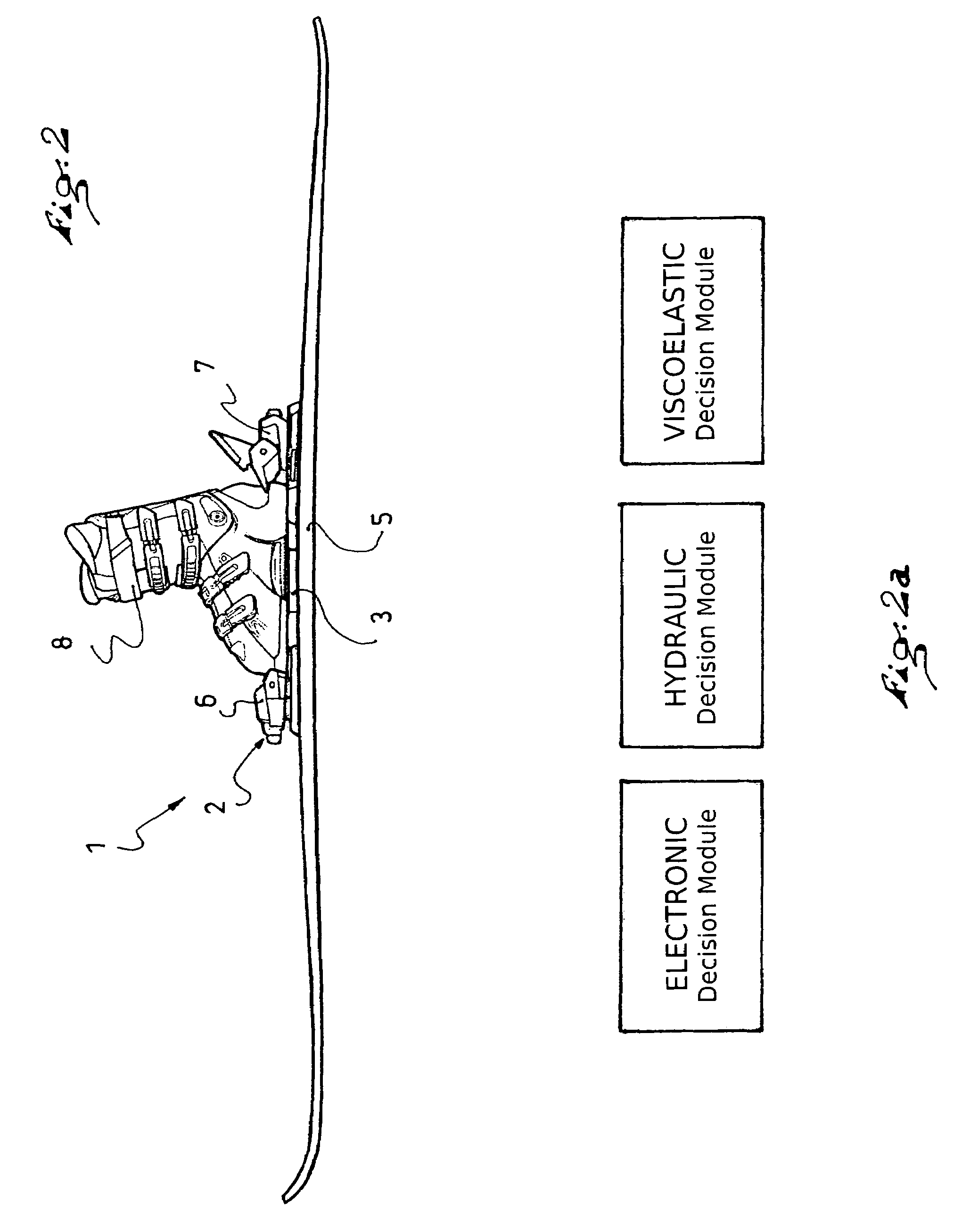Safety binding
a safety and binding technology, applied in the direction of ski bindings, sports equipment, skiing, etc., can solve the problems of skier falling, skier being unsuitable for skiing safety, and increasing the risks of skier taking
- Summary
- Abstract
- Description
- Claims
- Application Information
AI Technical Summary
Benefits of technology
Problems solved by technology
Method used
Image
Examples
Embodiment Construction
[0021]The International Organization for Standardization (ISO) has drawn up an international standard for the assembly, adjustment, and inspection of a ski / binding / boot system (ISO 11088). This standard specifies procedures particularly intended for retailers of sporting goods for assembling and adjusting ski binding mechanisms.
[0022]The ISO 11088 standard defines optimal, theoretical release moments as a function of the skier's weight, height, and type. For a skier weighing between 67 and 78 kg (i.e., a range of approximately 147-172 lbs), for example, it is recommended that the binding disengage and release the boot when the value of the moment of the forces to which the boot is subjected is such that the component along the z-axis (vertical axis) reaches 50 N.m. (i.e., approximately 36.8 ft.-lbs.).
[0023]Binding manufacturers conform to standards and, in order to facilitate the adjustment operation carried out by technicians, they mark their products with scales graduated between ...
PUM
 Login to View More
Login to View More Abstract
Description
Claims
Application Information
 Login to View More
Login to View More - R&D
- Intellectual Property
- Life Sciences
- Materials
- Tech Scout
- Unparalleled Data Quality
- Higher Quality Content
- 60% Fewer Hallucinations
Browse by: Latest US Patents, China's latest patents, Technical Efficacy Thesaurus, Application Domain, Technology Topic, Popular Technical Reports.
© 2025 PatSnap. All rights reserved.Legal|Privacy policy|Modern Slavery Act Transparency Statement|Sitemap|About US| Contact US: help@patsnap.com



